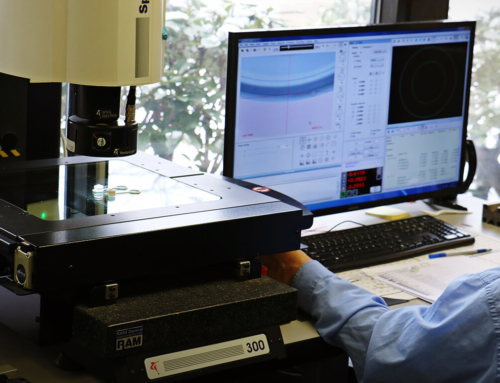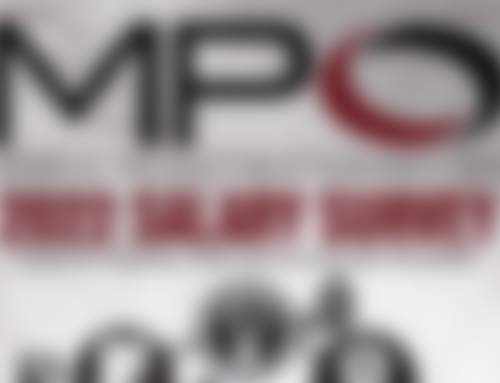What to Know about Laser Marking for Injection Molding
The application of laser marking in plastic molding manufacturing operations offers multiple advantages, making it a viable solution for brands looking to upgrade their approach to marking. Forum Plastics has a proven track record of listening to the voice of the customer and making recommendations on the right equipment and technology to support their needs. In response to a high volume of requests, Forum has expanded its capabilities to offer laser marking in addition to molding and pad printing. This article will share some of the key benefits of using laser marking systems and provide insights on the materials that can leverage the process.
What Is Laser Marking?
Laser marking is a general technique in which the laser interacts with the material to create a durable, high-contrast mark on the surface. The mark is durable with a medium to dark contrast, and when using a UV marking system you can achieve clearer, more detailed, and high-contrast part marking when compared to other available methods.
When Forum chose to invest in laser marking, we chose a 3-Axis UV laser marker. UV lasers can mark various materials with minimal heat damage thanks to the high absorption rate of UV light. This minimizes soot and burrs, prevents surface damage, and enables corrosion-resistant marking. Forum explored several options and chose the 3-Axis UV laser for its superior marking quality and optimal flexibility along with the added benefits of increased marking speed and improved production capacity. These time-to-market factors are just some of the key considerations for marking critical medical devices and healthcare components.
Laser Marking vs. Pad Printing
When it comes to the advantages and disadvantages of commonly used marking processes, companies should consider several factors to choose the right solution for their products.
- Laser marking color is limited by material composition. Pad printing color is not limited.
- If a revision is made for the artwork, laser marking can produce the new artwork without any downtime. Pad printing requires a new cliché.
- Laser markers can cover larger curved surfaces while ink printing may need multiple hits (prints) and rotation of the part.
- The 3-axis UV laser marking system utilizes less heat, which provides the benefit of higher contrast marking that is damage free.
Some medical devices may require serial numbers, QR codes, manufacturing dates, or technical information for traceability. Examples include pacemakers, absorbable implantable materials for surgical sutures, and ultrasound diagnostic devices. In these instances, laser marking is the ideal solution because most applications requiring serialization do not need color marking. If color marking is needed, additives can be applied to make the material more responsive to the laser marker.


Forum’s laser marking machinery: Forum Plastics Headquarters
What Materials Can Be Laser Marked?
Some specific materials should not be marked due to their chemical makeup because they can produce dangerous gases or will not respond to the laser. These materials are carbon, PVC, PVB, PTFE/Teflon, and epoxy resins.
For UV lasers, plastics containing colorants provide the best chance for marking. Heat lasers provide the best marking quality for both natural and colored resins. Common materials marked at Forum include PC, ABS, nylon, santoprene, PLA, PP, aluminum, and steel.
Key Benefits of Laser Marking
Laser marking systems offer multiple advantages for medical and healthcare industries that utilize this secondary operation with their injection molding components.
- The process does not require consumables. Laser markers do not need any maintenance or the use of additional materials such as ink for pad printing.
- Products do not need to be cured or dried, speeding up the manufacturing process.
- UV markers are safe for medical parts and can bypass biocompatibility tests. UV marking, also known as cold marking, discolors the surface and prevents damaging the product compared to other heat engraving methods.
- Laser markers that utilize heat such as YVO4 & Fiber provide a deep engraving that can sustain wear from long-term use.
Laser marking is very precise and provides high-quality, contrasted marks for logos, serialization, or other required graphics or visuals. The tooling equipment undergoes less wear and tear because there is no contact during the process, which instead uses focused laser beams. The process is also more efficient since it can reach difficult or hard-to-access areas. As an example, engraving on convex and concave designs can be difficult to achieve using standard techniques. However, the ability of laser beams to reach all areas makes it extremely easy.
Another advantage is that the process provides sharp resolution due to the technique’s precision. The accuracy of results makes it a trusted method for essential part making and marking. Also, superior production speed can be achieved compared to conventional engraving methods, making the process both time saving and cost efficient.
Laser marking is also considered an eco-friendly process since it does not result in the toxic by-products seen in conventional techniques. The use of laser beams for engraving makes the process completely free of waste products and environmentally safe.
Today, Forum offers UV laser marking for both plastic parts and tooling. As technology and customer needs evolve, Forum is investigating offering heat laser engraving with a YVO4 laser for darker contrast and depth. Forum continually evaluates the latest solutions and technologies to stay ahead of the competition and provide quality options for customers. Contact us today to learn more about Forum Plastics and how we can partner with you on your next project.
Stay Connected
Sign up to get updates from Forum




